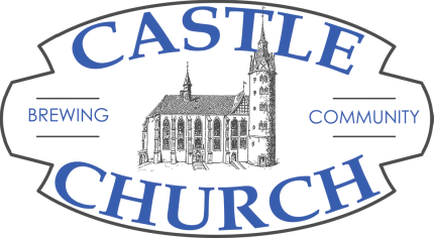|
The place where Martin Luther held his "Table Talks" in Wittenberg Germany.
We see it in every farmer’s market, in every seasonally sourced restaurant, in every documentary about human rights in the clothing industry, in every Netflix show on the sustainable food movement (my favorite is Chef's Table). There is a deep desire, that is surfacing in communities all across the country, to re-humanize the things that we buy. And we’re starting at the most basic level: with the things we put on and put into our bodies. It’s not like we all got together and planned this. There was no conference where grass-fed beef farmers in Wisconsin got together with “buy local” activists in so-Cal and said, “Alright, here’s what we’re going to do.” In fact, none of us who are a part of whatever this is can even fully say what binds us together or what the movement is called. Some of us have very high-minded ecological concerns. Some of us, just a gut yearning to live in a tastier and less artificial way. None of us even fully sticks to our ideals a hundred percent of the time (for my part, I can’t seem to quit the cheaply made queso sauce from the tex mex place near my house). But we know it when we see it. We can sense when a dish we’re eating was seasoned with a little bit of love. And we recognize each other from across the room. If you are what you eat, then everyday, all across this country, there are pockets of people who are making this decision: we want to be real. This is the sole reason why the craft beer movement continues to grow at record pace. According to all the rules of how our economy is supposed to work, there is no good business reason why this should be. There are massive, long-established breweries with nearly unlimited capital, who should be able to brew whatever we shoestring budget upstarts are brewing, do it for cheaper, and distribute it more efficiently. Yet, the once immobile tectonic plates of the beer industry continue to shift under our feet, nonetheless. And this shift isn’t even being driven by ingenious, titans of industry. Far from it. It is being driven by beard and flannel “hobbyists” (as they’ve been derided), fussing over whether to go heavier on the Cascade or the Centennial hops and experimenting with barrel-aged Belgian darks. True, you could make a case that our economy thrives on variety. These breweries have certainly uncovered a rich storehouse of old European styles, that the North American market had long forgotten, and they’ve invented quite a few more (It’s hard to believe that, other than during the war overseas, perhaps, my grandfather never drank a single style other than a very stripped down and Americanized version of the German lager). A novice to the industry might wonder why the big guys don’t just replicate and scale up these same craft styles or buy the breweries outright. Well, the short answer: they’ve tried. For years, they’ve been buying up breweries like Goose Island and Breckenridge left and right and developing cheap craft lookalikes such as Blue Moon and Shock Top. Still, little has changed in the projections for craft breweries, the number of which just surpassed the pre-prohibition era in the US, when there were over 4,100. And the not so subtly anti-craft advertising campaigns through which the big guys like Sam Adams and Budweiser have tried to assure their shareholders that there is no problem, have perhaps accomplished the very opposite. One even gets a hint of jealousy from these ads—just a whiff of a very human enviousness that, while the small craft brewer might not be making nearly as much money, she might just be having more fun. When I watch these ads, I’m suddenly reminded of that line from Hamlet: “The lady doth protest too much, me thinks.” There is no good business reason why the craft beer industry continues to grow at record pace. So there must be cultural reason. And it is this: the exchange of things, which we put into and onto our bodies, should be a very real and very human experience. None of us are very good at explaining why. But we feel it in our bones and in our souls. We all sense that there is something fundamentally more humanizing about eating a special recipe that your grandma passed down to you, than anonymously being handed a bag of food through a drive through window. And it’s the same with being handed a beer from someone who can say, “Hey, I just brewed this in that room right over there with you in mind.” At Castle Church, Aaron and I are excited to have you along for this journey with us.
|
Mashing in.On how Castle Church is stirring up a movement from a brewery in Florida. Archives
July 2018
|
Curated selection
- UK Online Casinos Not On Gamstop
- UK Online Casinos Not On Gamstop
- Casino Sites Not On Gamstop
- Best Non Gamstop Casinos UK 2025
- Casino Sites Not On Gamstop
- UK Online Casinos Not On Gamstop
- Non Gamstop Casinos UK
- Non Gamstop Casino Sites UK
- UK Casino Not On Gamstop
- Best Non Gamstop Casinos
- Online Casinos
- UK Casino Not On Gamstop
- Non Gamstop Casino
- Gambling Sites Not On Gamstop
- Migliore Casino Non Aams
- List Of UK Casino Sites
- UK Casinos Not On Gamstop
- Gambling Sites Not On Gamstop
- Best Non Gamstop Casinos
- Casino Not On Gamstop
- Betting Sites
- Non Aams Casino
- Migliori Siti Casino Non Aams
- Non Gamstop Casino
- Casino En Ligne
- Bitcoin Casinos
- Meilleur Site Casino En Ligne Belgique

 RSS Feed
RSS Feed




